x
Did this guide help you? If so please give them a vote or leave a comment.
You can even win prizes by doing so!
Vote
Comment
I liked this Guide

I didn't like this Guide

 Thank You!
Thank You!
Your votes and comments encourage our guide authors to continue
creating helpful guides for the League of Legends community.
Recommended Items
Runes:
Resolve


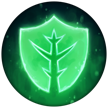
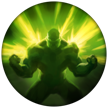
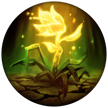
Inspiration






+10% Attack Speed
+10-180 Bonus Health
+10-180 Bonus Health
Spells:
1
2
aggressive
![LoL Summoner Spell: Flash]()
![LoL Summoner Spell: Ignite]()

Flash

Ignite
Items
Ability Order

Leverage (PASSIVE)
Renata Glasc Passive Ability
Threats & Synergies
 Threats
Threats
 Synergies
Synergies
Extreme
Major
Even
Minor
Tiny
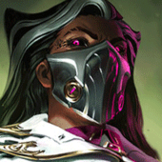 Show All
Show All
None
Low
Ok
Strong
Ideal
 Extreme Threats
Extreme Threats

 Ideal Synergies
Ideal Synergies

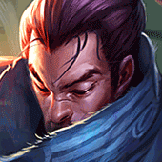
Yasuo
high mobility makes it hard to hit him. windwall blocks q and r

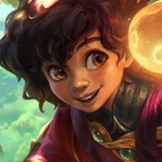
 Synergies
Synergies
Ideal
Strong
Ok
Low
None
Champion Build Guide
Strengths
Renata has numerous strengths in her kit. Thanks to hard cc, her aoe slow, ult and potential q, and mid-large range of abilities, she can control space very efficiently. Her q and e make for decent peel, and w makes for an efficient baiting tool and has good dive potential. Her ult is also good at disorganzing enemy positions, forcing people away from the ulted zone. Her strongest point however is her counterengage. Landing a q on an incoming Zac jumpshot, snaring him in on the spot in your team is just..oohh. Oh and she has an ult as well that can force enemies to AA eachother. Which can give you double kills while not even being around anymore. Or a 1000g shutdown on the fed Xayah because you took over a 15-2-10 Bel'veth that's been hardfocussing you. Ooooh the sweet revenge.
Weaknesses
Glasc has some weaknesses as well. She suffers from an overal lack of mobility. This is why I like building her quite tanky and taking out of combat MS. Her engage is also quite mediocre, since it relies on landing a good q or, which is tricky due to the slow projectile speed and casting times. In lane, expect to struggle against sustain and hard poke lanes, as glasc's kit is limited in range and relies on good positioning and prediction more then anaything else. In teamfights, watch out for wombo combo engages, like Jarvan-Yasuo, Amumu-Yone, Galio-Brand, etc. I've lost a few fights getting chain CC'd, or having multiple carries drop to low hp because of the AOE burst.
Rune picking
Against hard engage melee, I prefer the Guardian setup. The poke from aa, e and spellthief was strong enough, guardian was a solid counter against hard engages. Against poke and sustain champs, I prefered the Aery setup, as the extra damage/shield helped to tick the poke fights in our favor.
In depth: Q use
In lane
Against tank opponents use q for disengage and creating space for safety. Against poke/sustain opponents, use q for catching opponents out of position and dragging them into dangerous position. Zoning them out of threat range is less viable bcs of the long cd on q.
In midgame
When going for picks and roams, flash-q makes for a good engage. This tactic doens't work very often though, because of the slow projectile speed. I ended using it most effectively as a peel and counterengage tool, with the tiny forced movement and stun often catching enemies of guard. Also, it feels great.
Teamfights
In big teamfights, I alsmost exclusively use q for peel. Being able to keep the carry safe has been the greatest succes factor. Note that when I say carry, I don't necessarily mean the ADC or midlaner. Just anyone who I believed could carry the team to victory. It's been depressing playing the game.
Against tank opponents use q for disengage and creating space for safety. Against poke/sustain opponents, use q for catching opponents out of position and dragging them into dangerous position. Zoning them out of threat range is less viable bcs of the long cd on q.
In midgame
When going for picks and roams, flash-q makes for a good engage. This tactic doens't work very often though, because of the slow projectile speed. I ended using it most effectively as a peel and counterengage tool, with the tiny forced movement and stun often catching enemies of guard. Also, it feels great.
Teamfights
In big teamfights, I alsmost exclusively use q for peel. Being able to keep the carry safe has been the greatest succes factor. Note that when I say carry, I don't necessarily mean the ADC or midlaner. Just anyone who I believed could carry the team to victory. It's been depressing playing the game.
In depth: R use
I love Glasc ult. It's a big pink cloudy wall of goodness and doom. It makes your enemies go crazy while you stay at a distance, smiling. RRRRRRRRRRRRRRRRRRRR.
The main uses I have found for the ult are engage, disengage and counterengage. When to disengage: enemy is stronger then you. When to engage: you are stronger then the enemy. When to counterengage: enemy is stronger then you and out of position, giving space for an epic comeback.
For direct engaging, Renata ult is pretty bad due to slow ability movement. It is situationally useful though, namely a) in chokepoints, bcs it forces dashes and escapes, or b) for zoning opponents away, bcs the slow movement and wide hitbox threaten a lot of space, and c) for trapping opponents who are out of position, forcing them to either walk through the smoke or stand and fight. This last one might seem odd (why not just have them attack their own team right?), but I found something interesting here. The point of Glasc ult is to threaten an area because an opponent loses control of his character. By trapping an opponent between my team, the ult and terrain (e.g. a wall), the opponent is essentially still forced into a decision (e.g. flash out or stand and fight), with one usually being a lot better then the other. So you still end up forcing the move of an opponent, despite not hitting them directly.
Glasc ult is also very good at disengages. The area is so big, it creates a few seconds of breathable space between your allies and oppnonents. I fired it directly multiple times to buy time for myself and my allies to get away.
Counterengaging is where Renata's ult feels most rewarding. It's glorious to see opponents burn all their gapclosers to engage, only to be set upon their teammates by the evil oppressive smoke. And because they used their blinks, dashes and whatnot to engage, they couldn't retreat! Oh joy. I've noticed that in my elo, being all-inned on also tends to make enemy movement a bit more predictable, which meant it was easier to aim the ult precisely. Because being engaged on can be quite tricky (noone likes to be fiddle nuked) counterengage can be hard to pull off. Generally, prioritizing on peeling for the carry worked best for me, and I've had to use ult just to create space.
Target selection
for counterengage, aiming at dps is theoretically best because they deal most damage. For disengage, aim to diffuse the situation. Aim for largest group of opponents to hinder follow up, opponent with strong engage to create safe space, or path opponents have to cross to threaten an area. This all diffuses the engage situation. For engage, aim to control enemy movement. Aim to lock down key targets for picking off, or the largest group to create space for allies to move.
When to pick what engage
Allies have strong engage, probably means comp has low poke or sustain. Means allies are prone to being outdamaged in long fights. Make up for this by ulting for disengage or counterengage, complement by using ult as follow-up. Enemy comp has strong engage, ult for counterengage and disengage. Allies have weak engage, probably means they have high poke, sustain use ult for engage and follow-up. Opponents have weak engage, ult for engage and counterengage.
The main uses I have found for the ult are engage, disengage and counterengage. When to disengage: enemy is stronger then you. When to engage: you are stronger then the enemy. When to counterengage: enemy is stronger then you and out of position, giving space for an epic comeback.
For direct engaging, Renata ult is pretty bad due to slow ability movement. It is situationally useful though, namely a) in chokepoints, bcs it forces dashes and escapes, or b) for zoning opponents away, bcs the slow movement and wide hitbox threaten a lot of space, and c) for trapping opponents who are out of position, forcing them to either walk through the smoke or stand and fight. This last one might seem odd (why not just have them attack their own team right?), but I found something interesting here. The point of Glasc ult is to threaten an area because an opponent loses control of his character. By trapping an opponent between my team, the ult and terrain (e.g. a wall), the opponent is essentially still forced into a decision (e.g. flash out or stand and fight), with one usually being a lot better then the other. So you still end up forcing the move of an opponent, despite not hitting them directly.
Glasc ult is also very good at disengages. The area is so big, it creates a few seconds of breathable space between your allies and oppnonents. I fired it directly multiple times to buy time for myself and my allies to get away.
Counterengaging is where Renata's ult feels most rewarding. It's glorious to see opponents burn all their gapclosers to engage, only to be set upon their teammates by the evil oppressive smoke. And because they used their blinks, dashes and whatnot to engage, they couldn't retreat! Oh joy. I've noticed that in my elo, being all-inned on also tends to make enemy movement a bit more predictable, which meant it was easier to aim the ult precisely. Because being engaged on can be quite tricky (noone likes to be fiddle nuked) counterengage can be hard to pull off. Generally, prioritizing on peeling for the carry worked best for me, and I've had to use ult just to create space.
Target selection
for counterengage, aiming at dps is theoretically best because they deal most damage. For disengage, aim to diffuse the situation. Aim for largest group of opponents to hinder follow up, opponent with strong engage to create safe space, or path opponents have to cross to threaten an area. This all diffuses the engage situation. For engage, aim to control enemy movement. Aim to lock down key targets for picking off, or the largest group to create space for allies to move.
When to pick what engage
Allies have strong engage, probably means comp has low poke or sustain. Means allies are prone to being outdamaged in long fights. Make up for this by ulting for disengage or counterengage, complement by using ult as follow-up. Enemy comp has strong engage, ult for counterengage and disengage. Allies have weak engage, probably means they have high poke, sustain use ult for engage and follow-up. Opponents have weak engage, ult for engage and counterengage.
Matchups simplified
Glasc is vulnerable to being hard engaged on early by controller-catchers. Safe position is between caster and melee creeps. Pushing further then melee creeps is aggressive, makes you vulnerable and die a lot. Behind casters is passive, makes you lose pressure and objectives.
Final notes
The higher you get, the more you need to reward good behaviour. Good being efficient, engaging, with thought and intention. This seems counterintuitive, but the higher you get the more your mistakes count. Not because you make more mistakes, but because mistakes are more quickly capitalized on by the opponent. You can try looking into the mistakes and telling yourself "I wouldn't do it again in order to improve" but that usually backfires. Every game something goes wrong, and continuously focussing on the mistakes is bad for morale, and didn't even help with cleaning up the mistakes. You'll just feel pressured, realizing there would be something bad waiting if you messed up. You can change that now, instead of punishing, giving small rewards when you're doing something that feels right. Explaining it: every time you reward yourself, say with a piece of chocolate, you're telling yourself that every bit of yourself, even those that you don't even know, did something right. That middle bit is important because it gets you out of your head. As much as you'd hate admitting it, you're part animal, and probably a big part. So in stead of denying it, you can try to train it. It's hard. Patience is a virtue for a reason. This can mean that you're forced to admit something wasn't your fault (sounds weird, but saying something IS your fault sometimes means you're overestimating your influence, which was just not true), and sometimes it meant looking back into a good game, say a 0-3-12 stomp, and realizing you were buffooning mostly. So, as the pressure from the actual game and performance starts to mount, you can expect to need to reward yourself a lot more for playing well, or even adequate. POGs are nice (and sometimes, necessary), but hitting good play consistently determines the level and rank you can achieve.









 10,813
10,813
 0
0









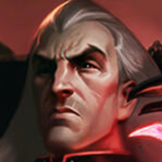
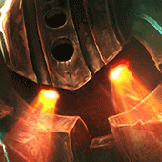
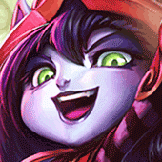

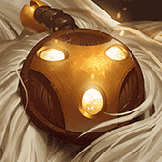
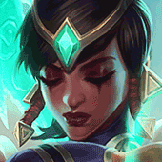
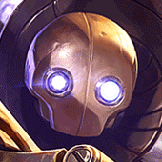
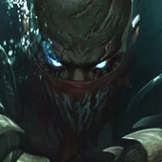
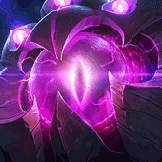
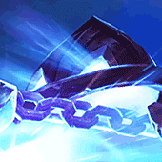
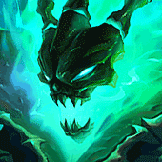

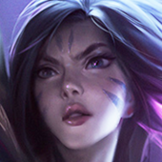
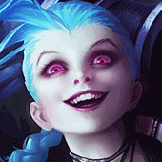
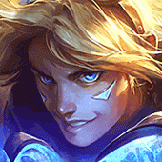
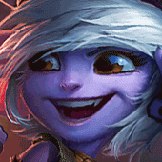
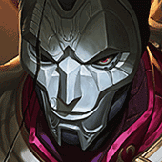
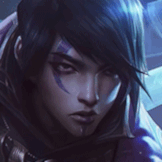









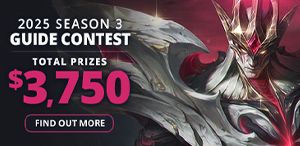

You must be logged in to comment. Please login or register.